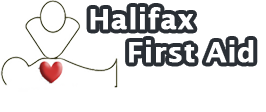A transient ischemic attack (TIA) is a result of a temporary inhibition of the blood supply to the brain. This may be caused by an obstruction due to a blood clot in the artery that supplies blood to the brain. The symptoms of TIA are similar to those of a stroke, however, a TIA is often short-lived as the clot either dislocates itself from the area of blockage or dissolves restoring the natural blood flow to the brain. A TIA normally does not cause any permanent damage to the brain.
TIA is also known as a ‘mini stroke’ because it is often temporary. A person with TIA is susceptible of having a heart attack or a stroke. However, risks of suffering from major strokes can be prevented with early diagnosis and treatment.
TIA warns you about an incoming major stroke
A TIA is considered to be a warning sign that signals an incoming major stroke which is more severe than a TIA. It indicates that a blot clot or obstruction is blocking the normal supply of blood to the brain. If prompt medical treatment is not sought, there might be a break in the vessel leading to a major stroke. Brain cells that receive oxygen from the blood being supplied from a particular artery die if the blood supply is cut down. If emergency treatment is not given, the surrounding cells may die as well.
The symptoms of TIA are similar to those of stroke but the symptoms of TIA wear off within 24 hours. However, it is not wise to wait till the symptoms fade as a major stroke may result. You must take it as a warning that a particular part of the brain is starved of oxygen for a period of time and a stroke may follow after a few hours, days, weeks or even months. Therefore, it is recommended that you consider prompt medical treatment immediately.
Symptoms
Symptoms depend on the area of the brain which is starved of oxygen. The symptoms of TIA include:
- Blurred vision or reduced vision in one or both of the eyes
- Numbness or weakness of the face, arm, leg on both or either of the sides depending on the affected area of the brain. Paralysis may also result in these areas. If the left side of the brain is affected, the left side of the face or the right leg or arm will be affected and vice versa
- Dizziness
- Breathing difficulties
- Difficulty in speaking
- Difficulty in understanding
- Impaired control, coordination and balance
- Difficulties in swallowing
- Headaches
- Nausea and vomiting
Another way of recognizing stroke or TIA is the FAST test:
- Facial weakness: Ask the person to smile. Check for any facial changes such as drooping eyes or mouth.
- Arm weakness: Ask the person to raise both arms. Ask the person to squeeze your hand. Is the pressure applying equal force on your hand?
- Speech difficulty: Ask the person to repeat a simple sentence. Check if the person can understand what you are saying or is saying the sentence correctly.
- Time to act: If the person is not able to do any of the above tasks, call emergency medical help immediately or take the patient yourself to the emergency room quickly.
First Aid-Till help arrives
Once you have called an ambulance, follow these steps:
- Help the casualty and make him feel comfortable. If he is paralysed, you may have to help them move and make him feel relaxed.
- If the victim is unconscious, evaluate the ABCs: Awake? Breathing? Continuous Care.
- If the person is not breathing, begin CPR.
- Help the person to take a recovery position on his unaffected side. This will allow gravity to channel blood to the affected side of the brain. Blood or any other fluid may drain out of the ear in the process.
Prevention
If a person has suffered a TIA or is susceptible to suffer from heart attacks or stroke, the following lifestyle changes must be considered:
- Quit smoking
- Maintain a low fat, low cholesterol, low salt and a high fiber diet
- Exercise regularly
- Control diabetes properly
- Have only one glass of alcohol per day
Learn More
To learn the basic skills to prevent, recognize and manage victims with transient ischemic attacks (TIA) and other circulatory emergencies take a workplace approved training class with Halifax First Aid. Visit the first aid course page for registration and course information by clicking here.
Related Video on TIA’s
http://www.youtube.com/watch?v=Q68XVzzFMCY
